CEO & Cofounder,
HYPR
Upcoming Summits
Upcoming Summits
For Executives in the Houston / San Antonio Region
Thursday,
December 2, 2021
8:00AM - 6:35PM CST
Contact Samantha@CyberSummitUSA.com
or call 212.655.4505 ext. 247
If you run into any issues registering, please try using a different browser.
The Third Annual Houston / San Antonio Cyber Security Summit goes virtual as it connects C-Suite & Senior Executives responsible for protecting their companies’ critical infrastructures with innovative solution providers and renowned information security experts. Admission is just $95 giving you access to all Keynote Discussions, Interactive Panels and Product Demonstrations.
With full day attendance, you will earn 8 CPE/CEU Credits!

Insider Threats
Identifying & avoiding breaches and how remote work has impacted Insider Threats in today’s remote workforce age

The Future of Cloud Security
Best practices to mitigate cloud security threats and ways to minimize common misconfiguration errors
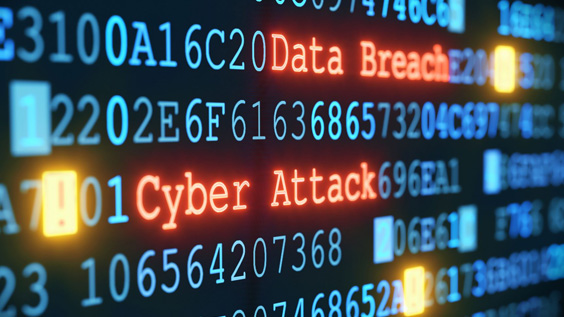
Ransomware on the Rise
Utilizing zero trust to avoid becoming a hostage to cyber criminals and what to do if you fall victim to an attack
Learn
Our conferences have been rated as one of The Top 50 Must Attend Conferences for the last 3 years. Learn from renowned experts from around the globe on how to protect & defend your business from cyber attacks during interactive Panels & Fast Track Discussions.
Evaluate Demonstrations
Evaluate & See demonstrations from dozens of cutting-edge solution providers that can best protect your enterprise from the latest threats.
Comfort & Safety
Many senior executives simply don’t have the time to travel for up to a week to the large cyber trade shows. Our mission is to bring the Cyber Summit experience to the executives from the comfort and safety of your own home. Our events are always for just one day only.
Engage, Network, Socialize & Share
Engage, Network, Socialize & Share with hundreds of fellow Powerful Business Leaders, C-Suite Executives & Entrepreneurs.
CEUs / CPE Credits
By attending a full day at the Cyber Security Summit, you will receive a certificate granting you 8 Continuing Education Units or Continuing Professional Education Credits. To earn these credits you must participate for the entire summit & confirm your attendance at the end of the day.
Investment
By investing one day at the summit, you may save your company millions of dollars, avoid stock devaluation and potential litigation.
Atmosphere
Each Cyber Security Summit is “By Invitation Only” and all attendees are pre-screened & approved in advance. Attendance is limited to approx. 300 Sr. Level Executives to maintain an intimate, non-trade show like environment.
Reality Check
Did Under Armour, Facebook, Equifax, Yahoo, Blue Cross / Blue Shield, Sony, Target and thousands of other businesses that were hacked do everything within their power to avoid being victimized? Is your company next? Learn the latest defensive measures at the Cyber Security Summit from your peers and from thought leaders in the industry.
QUESTIONS
For any questions, please contact Samantha@CyberSummitUSA.com or call 212.655.4505 ext. 225
SPONSOR
To sponsor, speak or exhibit at an upcoming summit, contact BRand@CyberSecuritySummit.com or call 212.655.4505 ext. 223
This educational and informational forum will focus on educating attendees on how to best protect highly vulnerable business applications and critical infrastructure. Attendees will have the opportunity to meet the nation’s leading solution providers and discover the latest products and services for enterprise cyber defense.
8:00-8:30
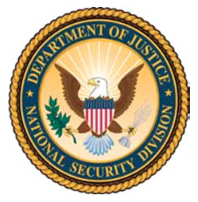
8:30-9:15

9:15-9:50

A lot of folks talk about the “what” behind DevSecOps, but few have mastered the “how” that makes it a success. With Development and Operations functions fused together in most organizations, Security must become a first-class cultural component in software engineering practices. In this talk, Check Point Field CISO Cindi Carter will share the story of how her team at a health IT company succeeded in implementing the secure Software Development Lifecycle for an organization with more than 3500 reluctant developers worldwide.
In this session, you will learn how to build in cybersecurity rather than bolting it on later:
– Understand the developer’s mindset and motivation
– Exploit the company culture and incentivize developers to desire security
– Expand from a few early adopters to thousands of developers
– Overcome the roadblocks that arise along the way”
9:50-10:15

The SolarWinds SUNBURST attack was a rude awakening for many security teams, and it won’t be the last time Security leaders face tough questions about how an adversary evaded defenses and stayed hidden. With threats persisting inside the network for months, security teams need a new plan. In this session, CISO Jeff Costlow discusses strategies, including revising existing mental models and incident response processes, to build resilience in the fight against advanced threats.
10:15-10:40

George Avetisov
CEO & Cofounder
HYPR
With the Passwordless Decade well underway, more and more organizations are asking the question: Why is now the right time to move beyond passwords?
George Avetisov, CEO of HYPR, will discuss the rise of organizations moving to the cloud, how the perimeter fades and the attack surface gets larger. Modern tools such as SNIPR and Modlishka make it easier for hackers to launch large-scale automated attacks, bringing credential re-use and two-factor-authentication attacks to record highs.
How did we get here, and will mainstream adoption of passwordless security have an impact? We will explore how the rise of virtual desktop infrastructure and a remote workforce has affected workstation login and review how the evolution of authentication has impacted organizations’ identity and access management systems.
In this session, you’ll learn:
10:40-11:30
Lynn Dohm Corey Bodzin Terrence McGraw Ashok Sankar Joseph Carson Jim Fulton George Tang Dave Lewis
Executive Director
WiCyS
MODERATOR
Chief Technology Officer
deepwatch
Vice President, Global Service Delivery
SecureWorks
VP of Product Marketing
ReliaQuest
Chief Security Scientist & Advisory CISO
ThycoticCentrify
Senior Director Product Marketing
Forcepoint
Principal Security Architect
JupiterOne
Advisory CISO, Global
Duo Security, now part of Cisco
Over the past few years, the number of organizations that have adopted cloud-based systems has grown exponentially, largely due to the COVID-19 pandemic. In turn, cloud security has become a critical issue for IT security executives and their teams. McAffee reported an increase of 630% in attacks by external actors targeting cloud services between January and April of 2020. This uptick in cloud security breaches is projected to persist even after the pandemic as many companies continue to utilize the cloud and leverage its benefits.
While migrating to the cloud offers numerous advantages, it also poses certain threats and challenges. In a recent report by Oracle & KPMG, over 90% of IT Professionals felt their organization had a cloud security readiness gap. A significant concern for many who are adapting to a cloud-based workforce is misconfigurations and gaps in cloud security programs. Additionally, cloud-based infrastructure requires adopting new security policies and processes. Many companies believe their existing security teams lack the necessary skillsets and knowledge that the cloud environment requires, especially as organizations turn to multi-cloud, hybrid cloud, and distributed cloud models.
This panel will highlight the areas where cloud systems can leave enterprises vulnerable, ways to minimize common misconfiguration errors, and other best practices to mitigate threats when migrating to the cloud. Our lineup of Industry Experts will provide their expertise on developing a robust cloud security strategy that addresses these issues and insight on how to stay secure in the future of cloud security.
11:30-11:55

As each organization implements a layered security program, across a distributed infrastructure and shared responsibility with their service providers, how can they gain visibility into malicious activity and orchestrate effective, business-wide responses to attacks?
Implementing great tools for IAM, PAM, Network, Data and Application security address many of the layers of controls required. Deploying solutions such as SIEM, SOAR, EDR, NDR, MDR and XDR provide varying levels of visibility and detection and response, however these silos need to be far better connected for maximum effectiveness and return on your investment.
Join IBM Security to hear how we see this all coming together while keeping the solutions that are already working well for you.
12:00-12:25
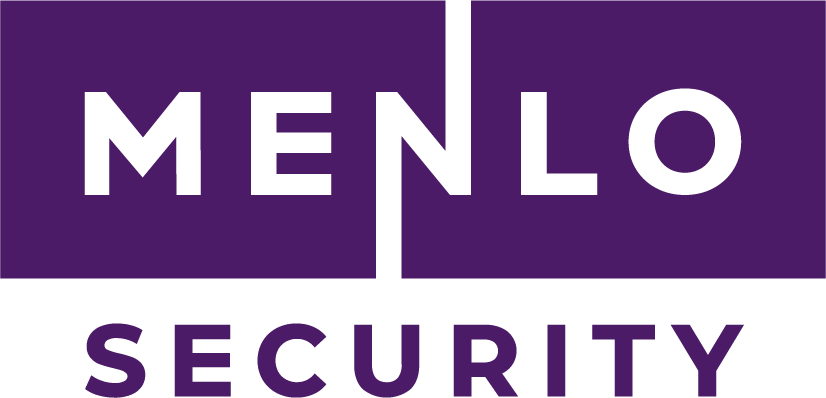
Mark Guntrip
Sr. Director, Cybersecurity Strategy
Menlo Security
If you’re a growing modern business, you likely have an appetite for the secure access service edge (SASE). We hate to break it to you, but there’s no “secret sauce” when it comes to successfully implementing the SASE framework. Every organization is different, with variying priorities for protecting their employees, customers, data, devices, and applications. It’s best to look at SASE as a themed menu of converged technologies that allows you to choose ones that will deliver the maximum business impact. During this discussion featuring Menlo Security’s Senior Director of Cybersecurity Strategy, Mark Guntrip, he invites you to take a seat at the SASE table to learn about the deployment menu you can build for your organization. Attendees can expect to learn:
• Why Zero Trust and SASE are the perfect pairings
• How SASE enables organizations to taste productivity gains
• How organizations can create a mix of satisfying integrated controls

12:25-12:50
Track ASam McLane
Chief Technical Services Officer
Arctic Wolf
It is important to recognize that, overall, the industry has an effectiveness problem. The escalation in threat activity and the talents shortage in the industry has created a situation where, despite lots of products and cybersecurity spend, we aren’t getting better protection. To put a finer point on it, there are over 3,000 vendors selling products in the industry. The total spend last year was $120B+ and even with all of that there we almost 4,000 breaches — a 96% increase over the previous year. The key takeaway from these breaches is that they are NOT product failures. They are operational failures. To prevent these kinds of breaches from happening again in the future, we believe, the industry needs to adopt a new approach – an operational approach – to cybersecurity.

12:25-12:50
Track BData is created about us every second, about our finances, healthcare information, personal life – the list goes on. Not only is that data created, but it’s then stored, altered, and transferred.
While it’s impossible to completely eliminate risk, there are practical steps that we can take to protect our files.
Join us as our MOVEit file security experts share what a file might go through and steps to take in defense of your data.
In this session, we’ll discuss:

12:50-1:15
Track A
12:50-1:15
Track BWill Kapcio
Security Solutions Engineer
HackerOne
Did you know that 80% of CISOs say that software projects have been hindered by concerns over inevitable security issues? Vulnerabilities don’t need to slow you down. Join HackerOne for a discussion on “Why the future of DevOps needs Hackers.”
Key takeaways
1. How organizations collaborate with hackers
2. How bug bounty data insights empower development teams
3. How companies like Spotify are keeping their applications secure
1:15-1:40
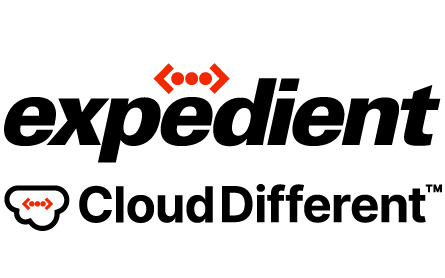
In an ever-expanding multi-cloud world, how do CIOs manage growing security complexity while still delivering business results? The key is to maximize the effectiveness of your human capital while building a complementary partner ecosystem to fill in the gaps. But this can be expensive, overwhelming and prone to failure if not done right. In this session, we will discuss how to align cybersecurity threat scenarios (ransomware and beyond) with corporate goals, identify core security competencies to keep in-house, and effectively develop a partner strategy to complement your team’s competencies. Further, we will explore how best to leverage partner tools and services to maximize business value while keeping your multi-cloud environments secure.
1:45-2:30
Cindy Liebes Tommy Todd Michael Bacon Brian Reed Dmitriy Ayrapetov Stephen Kowski Wally Prather Josh Yavor
Chief Program Officer
Cybercrime Support Network
MODERATOR
Vice President of Security
Code42
Director of Enterprise Solution’s Marketing
Accedian
Director of Cybersecurity Strategy
Proofpoint
Vice President, Platform Architecture
SonicWall
Global Director of Sales Engineering
IRONSCALES
Sr. Staff, Threat Researcher
SecurityScorecard
Chief Information Security Officer
Tessian
Insider Threat has become increasingly problematic to businesses as the frequency and cost of these threats have risen over the last several years. In a global study conducted by Ponemon Institute in September of 2019, there was a 31% increase in overall cost of Insider Threat and a 47% increase in the total number of Insider Incidents from 2018.
Today, Insider Threat poses an even greater risk to businesses in the wake of the COVID-19 pandemic. Forrester Research, Inc. reported that in 2020, a quarter of all security breaches were caused by an insider and estimates that in 2021, Insider Threats will account for 33% of security breaches.
This panel will discuss the various factors that contribute to this increase in Insider breaches, how remote work has impacted the malicious & non-malicious Insider Threats facing businesses, and the implications this has on enterprises today. Our lineup of Industry Experts will offer their insight & provide best-practices on how businesses and their IT Security Teams should address these risks and adapt in order to defend against Insider Threats.
2:30-2:55

Jim Shook
Director, Cybersecurity & Compliance Practice
Dell Technologies
Data is the lifeblood of business and other organizations in this digital age. Yet that data and the applications running the business are under constant attack. Nation states create cyber weapons that lock up data centers, sophisticated criminals employ the latest capabilities to gain access and encrypt data for ransom while destroying backups, and the threat of insiders becomes more critical as the stakes grow higher.
In this session, learn the details about how sophisticated cyber attacks occur; why cyber insurance isn’t enough and why paying a ransom has to be the option of last resort; and techniques and capabilities that can ensure your businesses’ ability to recover safely and efficiently from even a sophisticated cyber disaster.
2:55-3:20

3:20-3:50

Aubrey Turner Robert Youens
Executive Advisor
Ping Identity
Senior Project Manager
Simeio
3:50-4:35
Stacey Wright Tony Lee Ramesh Natarajan Rois Ni Thuama Brad Liggett Gil Azrielant Drew Schlussel Andrew Williams
VP of Cyber Resiliency Services
Cybercrime Support Network
MODERATOR
Vice President, Global Services Technical Operations
BlackBerry
VP Engineering
Cyglass
Head of Cyber Governance
Red Sift
Manager, Engineer
Cybersixgill
CTO & Co-founder
Axis Security
Director, Product Marketing
Wasabi
Principal Product Manager
Mimecast
In 2020, there was an unprecedented growth in ransomware attacks and this trend shows no signs of slowing down. Rather, these attacks are evolving and becoming more harmful as cyber criminals become more organized and effective. It is predicted that in 2021, businesses will fall victim to a ransomware attack every 11 seconds with an estimated cost of over $20 billion – 57 times more than in 2015, making ransomware the fastest growing type of cybercrime.
As a result, companies are transitioning from the traditional “trust but verify” method and implementing a Zero Trust model, requiring all users to be authenticated and continually authorized in order to be granted access and maintain access to company data and applications. By leveraging various technologies & techniques such as multifactor authentication, IAM, least privilege access, and microsegmentation, the Zero Trust model reduces the risk of a ransomware attack and minimizes the potential damage from a breach.
This panel will highlight where enterprises are most vulnerable to becoming a victim of ransomware and how utilizing a Zero Trust model minimizes this risk. Industry experts will discuss best practices to avoid a ransomware attack including adapting the Zero Trust model, what to do if your company is being held for ransom, ways to mitigate the damage caused by an attack, and how to recover afterwards.
4:35-5:00

In this deep-dive discussion, Synack Solutions Architect and Red Team Expert, Jeremiah Roe takes a practical approach to the attacker lifecycle. He walks through each of the 7 steps of the kill chain, from Reconnaissance to Actions on Objectives, providing live demonstrations and tools. Security practitioners will come away with a deeper understanding of the adversarial mindset and ways to apply an intelligence-driven defense model to identify, detect and prevent intrusions by threat actors. You’ll learn:
-How the adversary applies the kill chain
-New exploits (and how to defend against them)
-How to add rigor to your pentesting
5:00-5:25

Rob Ellis Scott McCormick Jenny Victor
EVP Sales
Reciprocity
CISO
Reciprocity
VP of Marketing
Reciprocity
Whether a start-up or an enterprise, you are probably working with multiple vendors, using their software and reliant on their systems. Yet while these external vendors provide invaluable services, they also introduce significant risk to your company’s information security.
How do you know if your vendors are meeting required contractual, security and privacy obligations?
If you don’t have processes in place to assess the risks these third parties pose, then your answer is most likely you don’t. And this is critical: You need to know the risks of working with third parties and that you can trust them — because if they go down, your business may, too.
Assessing risk, however, can be incredibly complex. Traditional risk management approaches that rely on manual processes, spreadsheets and even survey methods don’t scale well and are not automated enough. And they certainly can’t support a third-party vendor network once it reaches a certain size: spreadsheets and email folders become overwhelming, ad hoc processes and reporting cycles create confusion, and manual reviews lead to missed issues and trends. In fact, the more successful an organization is – and the more third-party vendors they work with – the more automation and continuous monitoring are required.
At Reciprocity, we work with companies of all sizes to help streamline and improve third-party risk management. Join Reciprocity CISO Scott McCormick and VP Rob Ellis as they walk you through:
5:25-5:40

Katie Paxton-Fear
Application Security Engineer
Bugcrowd
Often we hear about ransomware targeted at organisations who are specifically targeted by gangs to make a profit, pipelines or organisations at the top of the supply chain. However, ransomware is a threat that all businesses face, even SMEs, and often these organisations struggle the most in protecting, responding and recovering from ransomware incidents. This is a true story from my first week at my first job after finishing my degree, and how we got hit by ransomware and the difficult decisions some of the most junior members of staff had to make. While we had backups, how do you make the case to shut down the entire business for a day while they are running over just paying the ransom? Overall, it’s the story of how our security culture failed and how we could have prevented the attack in the first place by following some simple pieces of advice and how other SMEs can do the same.
5:40-6:05

6:05-6:35
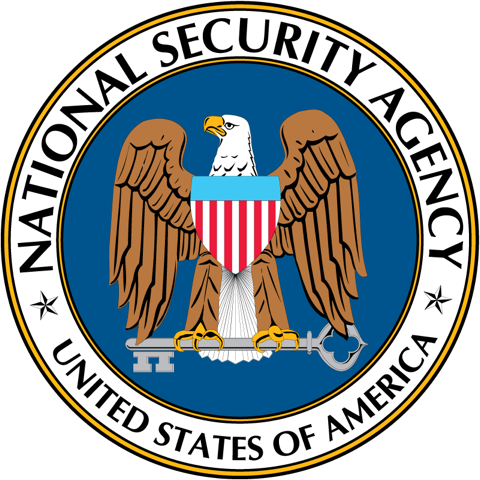
Quinn Carman
Chief
The NSA, Red Team
Prior to defending an organization against a determined attacker, their techniques must be understood. This presentation provides an adversarial viewpoint to inform network defense leaders how the attackers see their organizations and are able to be successful with their objectives, even when well defended. The presenter will draw upon over 17 years of personal experience as a Red Team operator and leader to illustrate how your organizations are viewed, through the eyes of an adversary.
Discuss and share the latest in cyber protection with our renowned security experts during interactive Panels & Round Table discussions. View our Security Content Sharing portal for past Cyber Security Summit solutions to protect your business from cyber attacks.
The Cyber Security Summit connects cutting-edge solution providers with Sr. Executives to analyze & diagnose cybersecurity flaws through interactive panels & roundtable discussions. View the latest presentations given at the Cyber Security Summit through our Security Content Sharing portal.
The Cyber Security Summit is proud to be in partnership with some of the industry’s leading organizations in technology, information security, and business leadership.
If your media outlet or association is interested in becoming a strategic industry partner with The Cyber Security Summit, please contact Megan Hutton at MHutton@CyberSecuritySummit.com or call at 212.655.4505 ext 241.
Find out how you can become a sponsor and grow your business by meeting and spending quality time with key decision makers and dramatically shorten your sales cycle. View Prospectus
| Cookie | Duration | Description |
|---|---|---|
| cookielawinfo-checkbox-analytics | 11 months | This cookie is set by GDPR Cookie Consent plugin. The cookie is used to store the user consent for the cookies in the category "Analytics". |
| cookielawinfo-checkbox-functional | 11 months | The cookie is set by GDPR cookie consent to record the user consent for the cookies in the category "Functional". |
| cookielawinfo-checkbox-necessary | 11 months | This cookie is set by GDPR Cookie Consent plugin. The cookies is used to store the user consent for the cookies in the category "Necessary". |
| cookielawinfo-checkbox-others | 11 months | This cookie is set by GDPR Cookie Consent plugin. The cookie is used to store the user consent for the cookies in the category "Other. |
| cookielawinfo-checkbox-performance | 11 months | This cookie is set by GDPR Cookie Consent plugin. The cookie is used to store the user consent for the cookies in the category "Performance". |
| viewed_cookie_policy | 11 months | The cookie is set by the GDPR Cookie Consent plugin and is used to store whether or not user has consented to the use of cookies. It does not store any personal data. |
